Trees Birds Mammals Fish Amphibians Reptiles
Wild Algarve
Bookshop
Hydnum repandum L. - Wood Hedgehog
Phylum: Basidiomycota - Class: Agaricomycetes (insertae sedis) - Order: Cantharellales - Family: Hydnaceae
Distribution - Taxonomic History - Etymology - Identification - Culinary Notes - Reference Sources
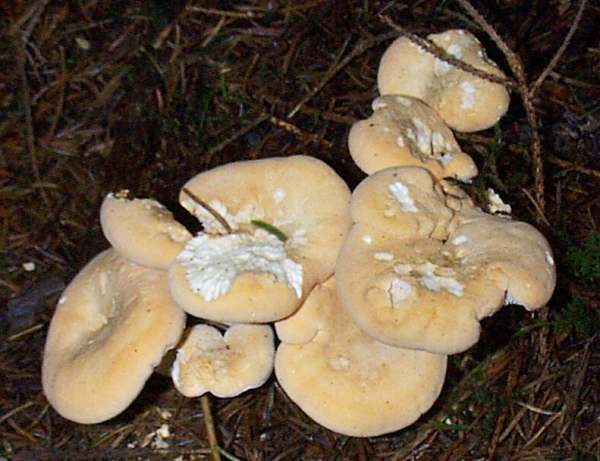
These large and fleshy fungi grow in all kinds of damp woodland. In France this prized esculent goes by the charming name of Pied de Mouton. Further evidence of the reputation of these 'tooth fungi' is hidden in the generic name Hydnum, which is derived from the Greek name for a truffle.
Distribution
Common in Britain and Ireland, Hydnum repandum occurs throughout mainland Europe and is also recorded from many parts of North America.
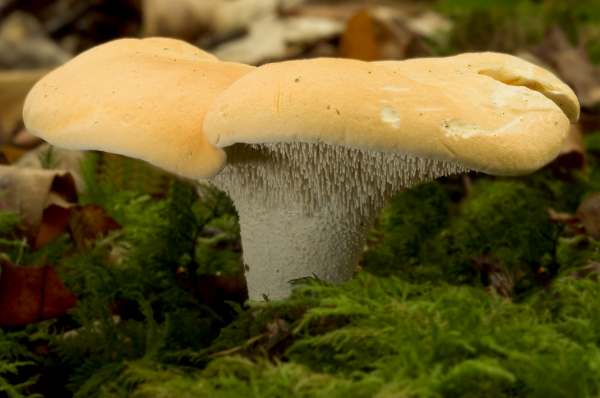
Both the Wood Hedgehog and its close relative the Terracotta Hedgehog Hydnum rufescens tend to be gregarious, forming small clumps and occasionally fairy circles. The picture below shows Wood Hedgehogs in mixed woodland, where they have produced an almost complete fairy ring about four metres across.
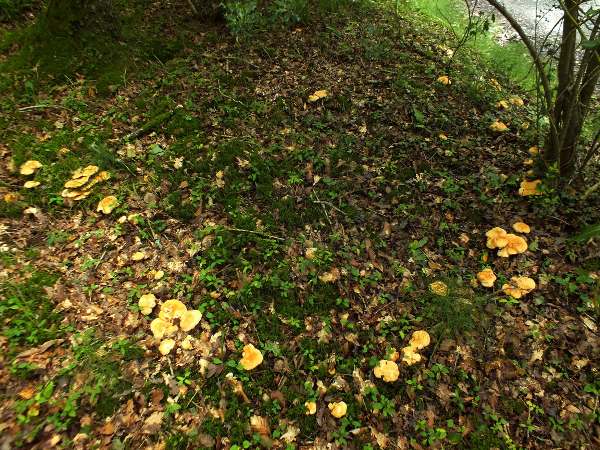
Taxonomic history
In 1753 when Carl Linnaeus described this woodland mushroom he gave it the binomial scientific name Hydnum repandum, which was subsequently sanctioned (retained rather than being changed) by Elias Magnus Fries and remains its currently accepted scientific name.
Synonyms of Hydnum repandum include Dentinum repandum (L.) Gray.
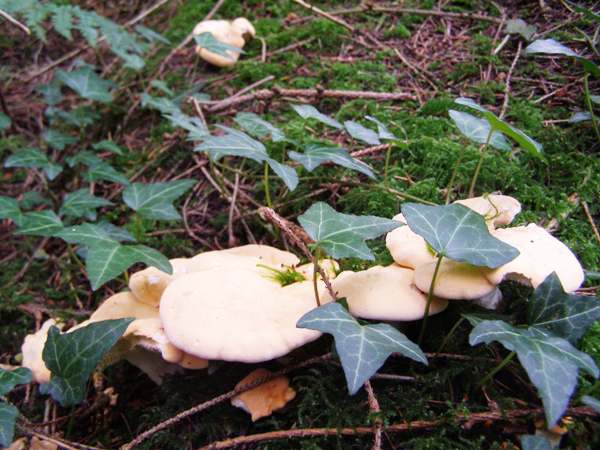
Etymology
Hydnum, the genus name, comes from the Greek noun udnon or hudnon, a truffle. The specific epithet repandum is Latin and means bent back or turned up, and often part of edge of the cap of a Wood Hedgehog mushroom is indeed upturned.
Identification guide
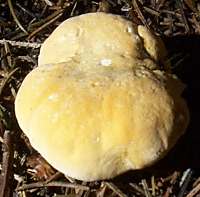 |
Cap
The cap is creamy white, with irregular
undulations and pits on its upper surface, which has a fine velvety feel and
tends to redden slightly when handled. The firm, crunchy flesh of this
large edible fungus is slightly spicy and not dissimilar to that of the
Chanterelle, Cantharellus
cibarius.
Caps of the Wood Hedgehog are irregularly shaped and typically 4 to 15cm across. |
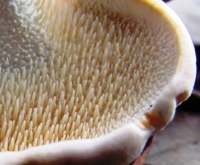 |
Spines
Hanging down like stalactites, soft spines cover the
fertile surface of the Wood Hedgehog. The spines are 2 to 6mm long and decurrent to the stem.
Stem
White; cylindrical, 5 to
10cm tall and typically 1.5 to 3cm in diameter; solid, with white flesh. |
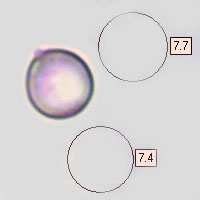 |
Spores
Ellipsoidal, smooth, 6.5-9 x 5.5-7μm.
Spore print
White. |
Odour/taste |
Odour not distinctive; turns bitter in the
mouth after a few moments delay. |
Habitat |
Ectomycorrhizal; forming rings among the moss and leaf litter
of forest floors. |
Season |
August to December in Britain and Ireland. |
Similar species |
Hydnum rufescens is
smaller and tan coloured; its spines are adnate to (or occasionally free of) the stem rather
than decurrent. |
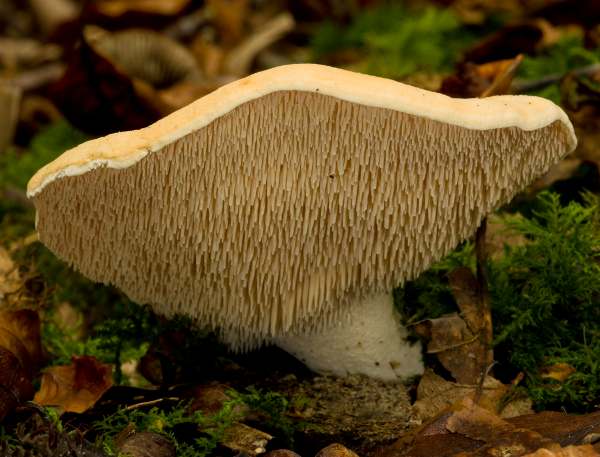
Culinary Notes
Hydnum repandum is a popular edible species,
but it should be picked while young and free from worms and grubs. The Wood Hedgehog is delicious in all sorts of dishes from soups and risottos to our own favourite invention which we call 'Hedgehogs on Toast'.
Reference Sources
Fascinated by Fungi, 2nd Edition, Pat O'Reilly 2016, reprinted by Coch-y-bonddu Books in 2022.
British Mycological Society English Names for Fungi
Dictionary of the Fungi; Paul M. Kirk, Paul F. Cannon, David W. Minter and J. A. Stalpers; CABI, 2008
Taxonomic history and synonym information on these pages is drawn from many sources but in particular from the British Mycological Society's GB Checklist of Fungi.
Acknowledgements
This page includes pictures kindly contributed by David Kelly.
Top of page...
Fascinated by Fungi. Back by popular demand, Pat O'Reilly's best-selling 450-page hardback book is available now. The latest second edition was republished with a sparkling new cover design in September 2022 by Coch-y-Bonddu Books. Full details and copies are available from the publisher's online bookshop...